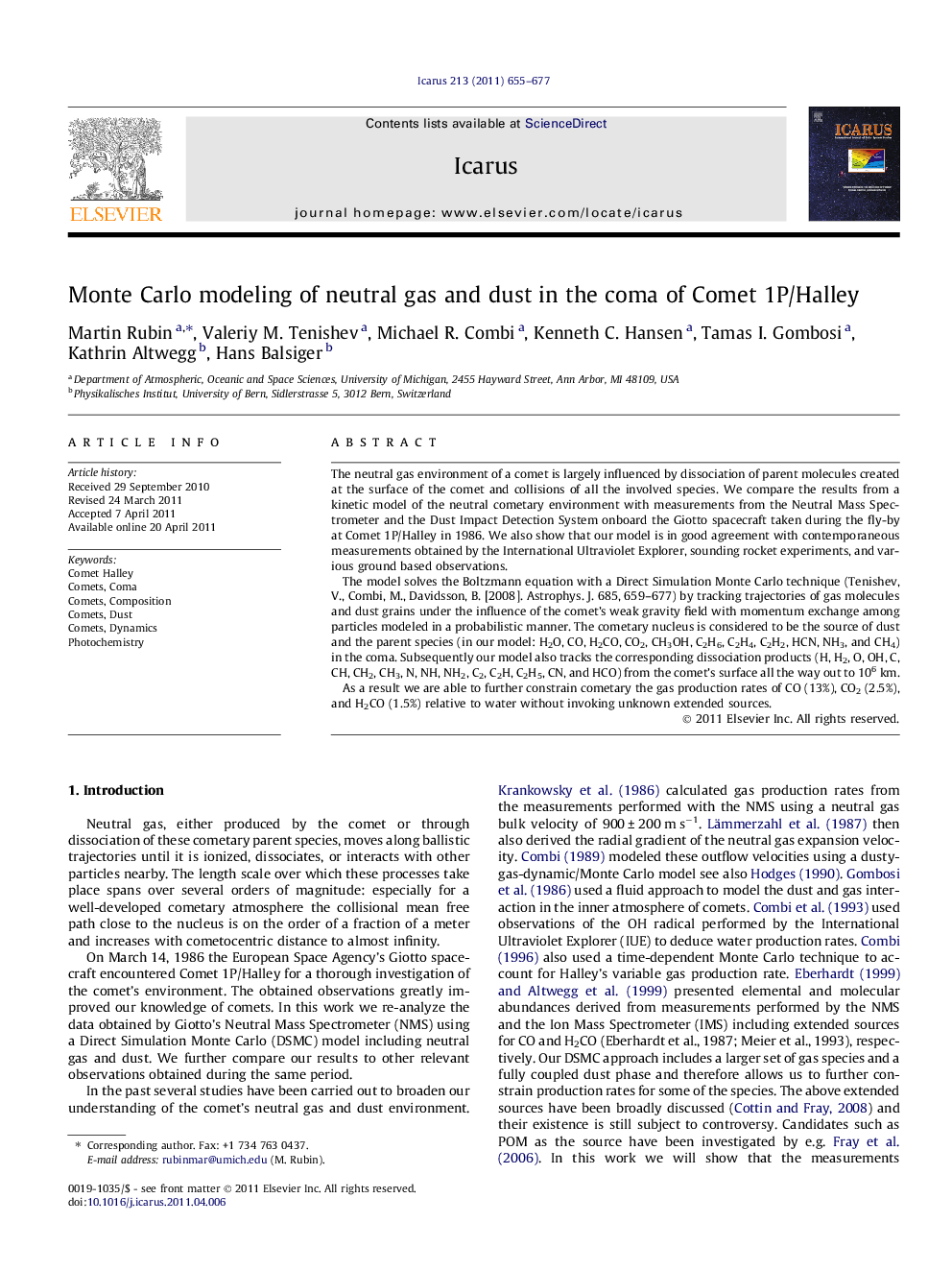| Article ID | Journal | Published Year | Pages | File Type |
|---|---|---|---|---|
| 1774528 | Icarus | 2011 | 23 Pages |
The neutral gas environment of a comet is largely influenced by dissociation of parent molecules created at the surface of the comet and collisions of all the involved species. We compare the results from a kinetic model of the neutral cometary environment with measurements from the Neutral Mass Spectrometer and the Dust Impact Detection System onboard the Giotto spacecraft taken during the fly-by at Comet 1P/Halley in 1986. We also show that our model is in good agreement with contemporaneous measurements obtained by the International Ultraviolet Explorer, sounding rocket experiments, and various ground based observations.The model solves the Boltzmann equation with a Direct Simulation Monte Carlo technique (Tenishev, V., Combi, M., Davidsson, B. [2008]. Astrophys. J. 685, 659–677) by tracking trajectories of gas molecules and dust grains under the influence of the comet’s weak gravity field with momentum exchange among particles modeled in a probabilistic manner. The cometary nucleus is considered to be the source of dust and the parent species (in our model: H2O, CO, H2CO, CO2, CH3OH, C2H6, C2H4, C2H2, HCN, NH3, and CH4) in the coma. Subsequently our model also tracks the corresponding dissociation products (H, H2, O, OH, C, CH, CH2, CH3, N, NH, NH2, C2, C2H, C2H5, CN, and HCO) from the comet’s surface all the way out to 106 km.As a result we are able to further constrain cometary the gas production rates of CO (13%), CO2 (2.5%), and H2CO (1.5%) relative to water without invoking unknown extended sources.
► Direct Simulation Monte Carlo model of Comet 1P/Halley’s coupled neutral gas and dust coma. ► In situ measurements as well as remote sensing observations reproduced. ► No extended sources required to explain carbon monoxide and formaldehyde abundances. ► Gas production rates updated using unpublished Neutral Mass Spectrometer data.
